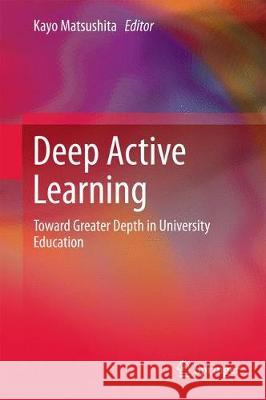Deep Active Learning: Toward Greater Depth in University Education » książka
topmenu
Deep Active Learning: Toward Greater Depth in University Education
ISBN-13: 9789811056598 / Angielski / Twarda / 2017 / 226 str.
Kategorie:
Kategorie BISAC:
Wydawca:
Springer
Język:
Angielski
ISBN-13:
9789811056598
Rok wydania:
2017
Wydanie:
2018
Ilość stron:
226
Waga:
0.51 kg
Wymiary:
23.39 x 15.6 x 1.42
Oprawa:
Twarda
Wolumenów:
01
Dodatkowe informacje:
Wydanie ilustrowane











